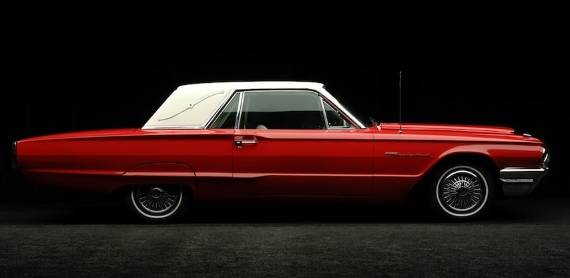Exploring the Rise and Fall of the Elegant Vinyl Roof Treatment
Vinyl upholstery has been synonymous with opulence and sophistication in the interiors of prestigious automobiles. However, there was a time when this same notion extended to the exterior of the car as well, albeit in the form of a vinyl roof. The “landau” roof, a curious and enduring trend of adorning the vehicle with its own unique style, adorned the bodies of numerous brands from the 1960s to the late 1990s. Even after manufacturers moved away from this trend, aftermarket companies continued to embrace it, keeping the spirit alive.
The story of the landau top goes beyond the realm of automobiles, lingering in the industry’s history like a lingering ghost, even when its relevance had faded into obscurity. While memories of this unconventional accessory may have dimmed over time, history has shown that we are never too far away from a revival of one of the industry’s most improbable status symbols.
Different Horses For Different Courses
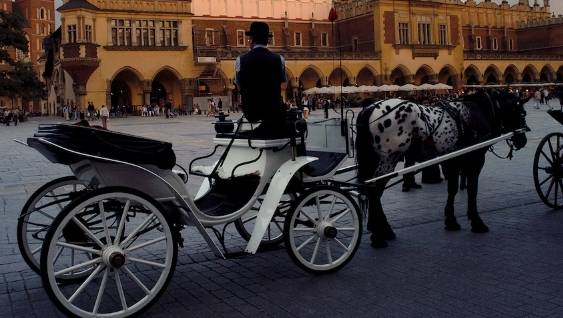
In a bygone era when horse-drawn carriages reigned supreme, there was a carriage known as the ‘landau’ that epitomized luxury. Originating from a German city renowned for its skilled coach builders, the landau boasted a unique feature that set it apart. It possessed a folding fabric roof that covered the entire passenger area, ensuring occupants remained dry during rainy days while still allowing them to bask in the sunlight during pleasant journeys. However, this design often left the driver exposed to the elements.
As automobiles emerged and started to compete with traditional horse-drawn vehicles for transportation, the early designs of car bodies took inspiration from the world of carriages. This approach was logical for several reasons. Firstly, many automotive manufacturers at the time had a background in serving the horse-drawn market, so they naturally carried over the styling principles from that era into the new era of internal combustion.
Customers were drawn to the familiar aspects of wagons and buggies, which contributed to their ease and willingness to accept the novel features such as noisy and smoky gasoline-powered engines. This resulted in various adaptations of the landau design, often featuring a half-shell structure that provided a clear view through the windshield while protecting against rain and snow. Over time, this design evolved to include fabric-covered sections for the steel rooflines found in more luxurious models.
From Fake Convertibles To Factory Cheap-Outs
Over time, the trends in automotive styling underwent a transformation, replacing the original reliance on wooden bodies with painted steel and tin structures. This shift marginalized the availability of vinyl-clad cars for the general public. Yet, as with any fashion, the cyclical revival of past trends significantly influenced the diverse shapes and silhouettes that populated car lots across America. Consequently, after a mere few decades of dormancy, the landau concept was poised for a resurgence.
Cadillac played a pivotal role in bringing about this revival. In their quest to infuse a sense of nostalgic elegance into the 1956 Eldorado coupe, Cadillac seized upon the contemporary wonder that was vinyl—an enthralling hydrocarbon-based product resulting from the advancements in industrial chemistry following World War II. The vinyl roof of the Eldorado served a dual purpose. It not only bestowed a touch of classic charm to the vehicle but also offered an opportunity for budget-conscious buyers to emulate the appearance of the fabric-top found on the exorbitantly priced Biarritz convertible edition of the car.
Before long, the remaining automakers in Detroit followed suit, aligning themselves with the trend set by the luxury frontrunner. By the early 1960s, a plethora of brands had joined in, promoting their own velvety, cushioned vinyl tops adorned with buttons and snaps, all aimed at evoking the sensation of classic convertible roofs of yesteryears. Notably, Ford played a significant role in resurrecting the “landau” name. They incorporated it as a distinct trim level in the early ’60s for their flagship Thunderbird model (while also offering vinyl as an option for the more affordable Falcon Futura). To accentuate the connection to traditional carriage design, the Thunderbird even featured “landau bars” affixed to its sides, serving as a visual representation of antique carriage hinges.
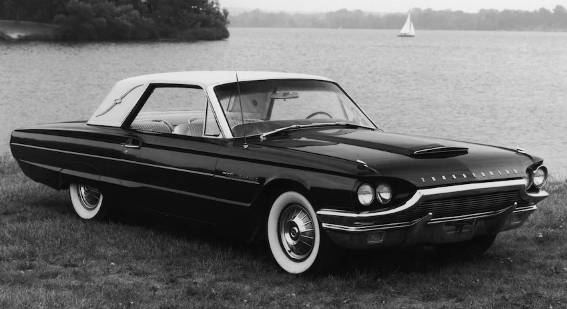
The public readily embraced the idea that exposed vinyl offered a comparable display of opulence and refinement to the traditional use of extensive interior wood. As expected, this belief triggered a surge in the popularity of the landau concept, spanning across various segments of the automotive market. Even unconventional prototypes like the 1963 Chrysler Turbine car adopted the allure of a vinyl coating, participating in the widespread fascination with this trend.
While the plush and cushioned variation persisted as a common feature among luxury vehicles, rigid vinyl exteriors swiftly made their way into the realm of affordable muscle cars and related segments.
Car manufacturers also enjoyed an additional advantage with the inexpensive installation of vinyl tops, as it helped them save significant costs at the body shop by concealing unsightly welds and other imperfections on the raw metal surfaces. Unfortunately, this cost-saving measure did not benefit the customers directly. In cases where the vinyl became torn or inadequately sealed, exposing the unpainted metal to moisture, it facilitated the hidden growth of rust, akin to a concealed tumor spreading across the roof and pillars.
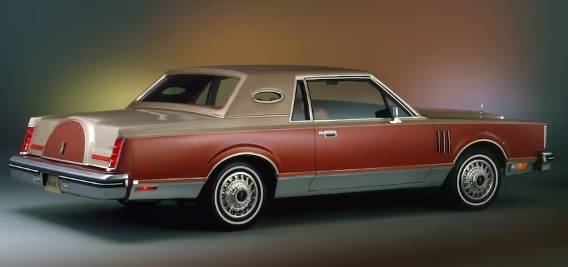
Portholes A-Plenty
As the 1970s unfolded, there was a noticeable shift in executive styling trends, reminiscent of a nautical influence. Portholes, referred to as ‘opera windows’ when including their rectangular counterparts, began to make appearances from the c-pillars of the grandest land yachts offered by prestigious brands such as Lincoln, Cadillac, Chevrolet, and even AMC. The formal landau top, synonymous with luxury, reached its pinnacle during this era. The term “landau” was generously used in marketing materials, often paired with similar-sounding ‘Brougham’ models. It adorned a wide range of personal coupes and large sedans, occupying the most esteemed positions within each automaker’s showroom.
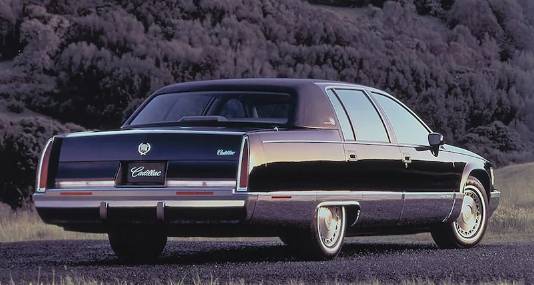
It was during this time that the momentum of the landau concept began to decline significantly. As the 1980s approached and the downsizing trend swept through Detroit, fewer models incorporated what was increasingly perceived as a reminder of an excessively ornate and extravagantly lavish automotive era. While some smaller vehicles, like the AMC Eagle, still featured prominent vinyl caps, the use of vinyl became more prevalent in carry-over models at the upper echelons of an automaker’s lineup. Cars such as the Oldsmobile 98, the Ford Crown Victoria, and the Chrysler LeBaron clung to the vinyl trend. The 1996 Cadillac Fleetwood and Buick Roadmaster marked the end of an era, being the final American automobiles to roll off the factory floor with the distinctive landau look.
What Goes Around, Comes Around…The Aftermarket
Regrettably, the aftermarket industry showed little inclination to let go of what it perceived as a lucrative opportunity, catering to customers yearning for a vinyl aesthetic. The outcome was the emergence of a cottage industry producing ill-conceived and even more poorly-fitting fabric coverings resembling hairnets. These were haphazardly attached to the rear quarters of various vehicles, ranging from Eldorados to Town Cars to Toyota Camrys, by owners eager to awkwardly relive a bygone era of automotive styling. As vehicle designs moved further away from the angular shapes of the past, these faux-landau kits became less convincing. Today, instead of garnering admiration from onlookers, they tend to elicit shudders, becoming a feature that more often than not induces discomfort rather than appreciation.
As expected, the trend of continuation landaus found its stronghold in Florida, a hub for retirees seeking to relive the automotive nostalgia of yesteryears. Consequently, as this population gradually transitions away from driving, the desire for landau aesthetics has dwindled to its lowest point in decades. It now patiently awaits its turn in the shadows, while the ever-changing whims of public taste persistently rotate like an endless carousel. That ticking sound you hear? It’s the countdown to the arrival of the 2035 Cadillac Escalade Brougham EV, symbolizing the potential resurgence of the landau concept in an electric future.
